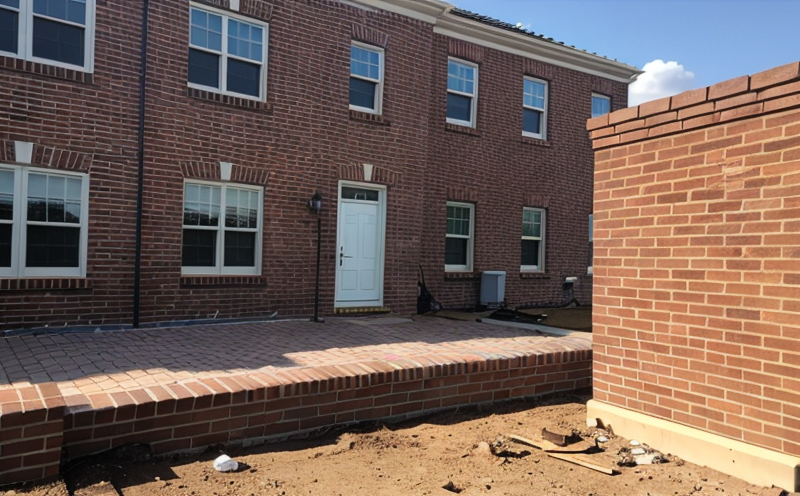EN 1015 Mortar Consistency and Flow Testing
The European standard EN 1015 specifies methods of testing mortar consistency, which is crucial for ensuring the quality and performance of masonry structures. This standard provides a framework to measure how easily or difficultly mortar can be mixed and applied during construction. Mortar consistency directly affects the overall strength and durability of the structure, as well as the ease with which it can be worked into bricks and blocks.
The testing methods outlined in EN 1015 are essential for quality assurance and compliance in the building industry. These tests help to ensure that mortar meets specified performance criteria, thus preventing potential issues such as cracks or disintegration over time. Proper consistency ensures that mortar is workable but not too fluid, which can lead to poor adherence between bricks or blocks.
The standard primarily focuses on two key aspects of mortar: its flow and consistency. Flow tests are conducted using a flow table (also known as a slump test for concrete), where the consistency of the mortar is measured by observing how far it spreads out over time. Consistency testing, on the other hand, involves assessing the amount of water required to achieve the desired workability without compromising strength.
Understanding these parameters is vital because they influence several critical factors in construction projects:
- Strength and Durability: Proper consistency ensures that mortar bonds effectively with bricks, reducing the risk of failure over time.
- Workability: The ease with which the mortar can be applied directly affects labor costs and efficiency on-site.
- Safety: Ensuring the correct consistency minimizes risks associated with improper mixing that could compromise structural integrity.
To conduct these tests, laboratories typically use specialized equipment such as a flow table or slump cone. Specimens are prepared according to EN 1015 guidelines, ensuring uniformity and replicability of results. The testing process involves measuring the spread or height reduction of the mortar over time under controlled conditions.
The results from these tests provide critical data that informs decision-making regarding material selection and construction methods. By adhering to this standard, builders can ensure that their projects meet stringent quality standards set by regulatory bodies across Europe.
Benefits
The benefits of performing EN 1015 mortar consistency and flow testing extend beyond mere compliance; they offer substantial advantages to stakeholders involved in building and infrastructure projects. Firstly, these tests help prevent costly rework by ensuring that the materials used are suitable for their intended purpose right from the start.
- Cost Efficiency: By identifying issues early on through testing, unnecessary delays or corrections can be avoided, saving both time and money.
- Quality Assurance: Consistent adherence to standards like EN 1015 ensures that all materials meet the required specifications, leading to higher quality end products.
Secondly, these tests contribute significantly towards maintaining safety standards within construction sites. Ensuring that mortar has appropriate consistency helps reduce risks associated with weak or poorly bonded structures, ultimately enhancing public safety and confidence in infrastructure projects.
Competitive Advantage and Market Impact
In a competitive market environment, meeting and exceeding industry standards can give organizations significant advantages. For instance, adhering to EN 1015 demonstrates a commitment to excellence that resonates with clients who prioritize quality over cost.
- Enhanced Reputation: Companies known for rigorous testing and compliance are often preferred by discerning customers looking for reliable partners.
- Increased Market Share: A reputation built on consistent performance can attract more business, thus expanding market share.
The impact of such practices extends further into the supply chain. Suppliers who provide mortar samples that consistently meet these standards are likely to be favored by construction firms over those whose products do not pass muster. This preference translates into better relationships and potentially larger orders for compliant suppliers.
Moreover, compliance with international standards like EN 1015 can open doors to new markets where strict regulatory requirements prevail. It also facilitates smoother trading processes between countries that have adopted these standards as part of their own regulations.
Use Cases and Application Examples
- New Construction Projects: Ensuring proper mortar consistency is crucial during initial stages of any new construction project to lay a strong foundation for the structure.
- Retrofitting and Renovation: When renovating older buildings, maintaining consistent mortar can help preserve historical structures while improving their longevity and safety.
For quality managers and R&D engineers involved in these projects, understanding EN 1015 is essential. It provides a clear guideline on how to prepare specimens, conduct tests, interpret results, and implement necessary adjustments based on those findings.
In practice, laboratories often use advanced instrumentation like automated flow tables or digital cameras to capture precise measurements during testing. This not only ensures accurate data but also allows for easy documentation and reporting of results.





